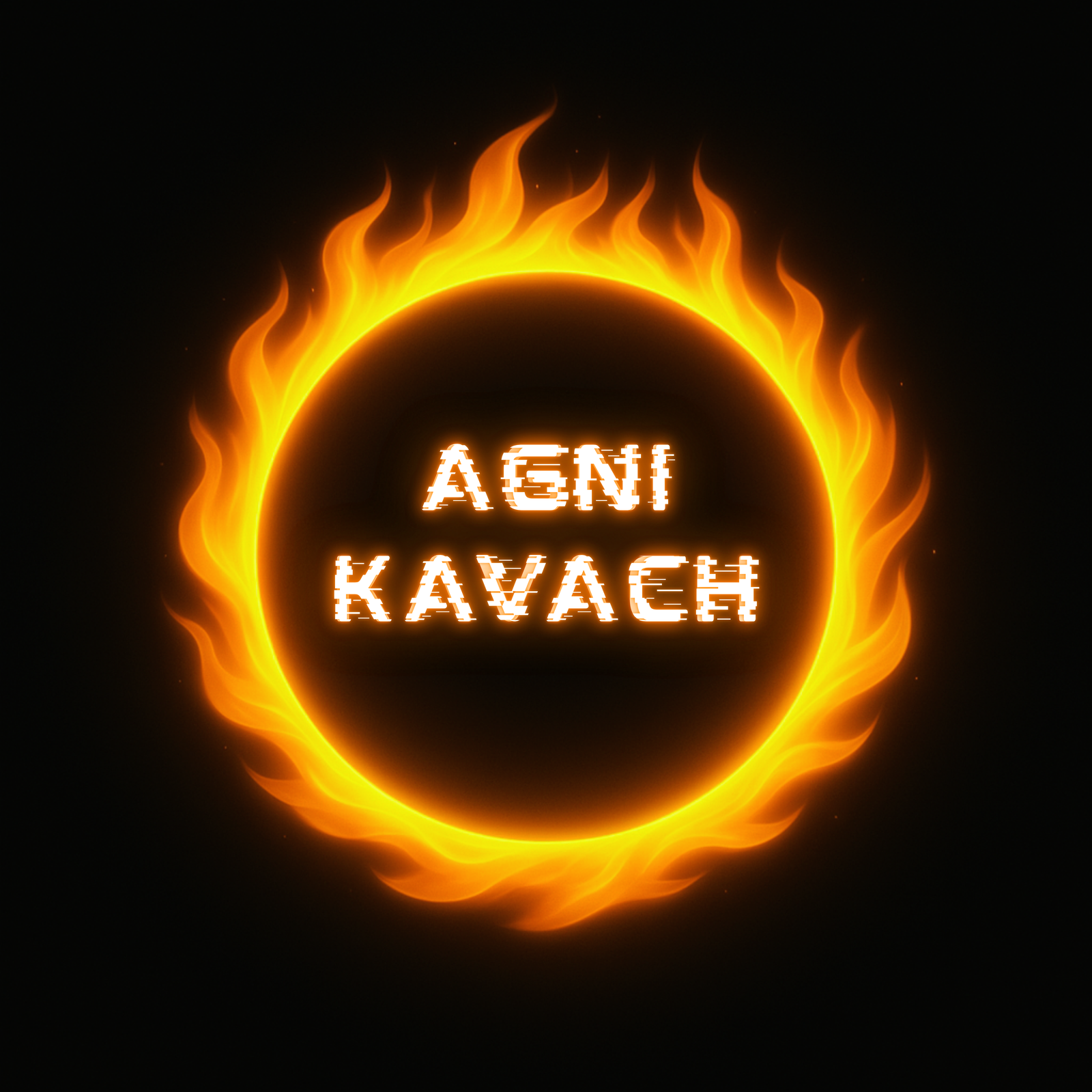Sumobot Challenge
October, 2026
At the heart of sumo bot competitions lies the fusion of mechanical design and programming prowess. Teams must meticulously construct their robots, optimizing their weight distribution, traction, and pushing power. They must also develop sophisticated control algorithms, enabling their robots to navigate the arena, anticipate their opponents' movements, and execute precise pushing maneuvers. The challenge objective is to force the opposing robot out of the arena by pushing or maneuvering them over the edge. Two bots compete in a head-to-head match following the basic system of traditional human sumo matches. Bots are allowed no weapons, and are not allowed to flip each other. The sole purpose is a pushing match between the two bots to force the other from the arena.
- 300 Teams will be selected across all countries to participate in Sumo Bot Challenge.
- All participants will get a certification of Participation from All India Council For Robotics & Automation (AICRA).
- INR 125,000 to be awarded to winning teams.
Eligibility Criteria
- Jr. Category : RoboClubs/ Schools or individuals may nominate. Participants’ age should be between 8 to 16 years.
How To Get on Sumobot Challenge
- STEP 1: Register your RoboClub or Institute as TechnoXian RoboClub online at official TechnoXian website. If you do not have Club or Institute, you may form a new TX RoboClub.
- STEP 2: Prepare a video of 1 minute to 5 minutes (maximum 100 MB), showcasing team readiness, creativity, preparing for challenges, or anything to show passion to participate in TechnoXian. Share the video either on email at videosubmission@technoxian.in (as google drive or We transfer) or WhatsApp at +91 9289095404 mentioning Your WRC ID (Competition Id). All videos will be uploaded on TechnoXian YouTube channel.
(Note: Video is for promotion for our Participants who are coming to participate in Technoxian)
Sumo bot competitions are a thrilling fusion of engineering, strategy, and athleticism. Participants craft small, autonomous robots programmed to push opponents out of a ring, emulating the ancient sport of sumo wrestling. Builders meticulously design their creations for maximum traction, weight distribution, and pushing power. Each match unfolds with rapid-fire manoeuvres, as robots jostle for dominance within the ring's confines. Strategies range from brute force to cunning evasion tactics, keeping audiences on the edge of their seats. Spectators marvel at the ingenuity and precision of these miniature gladiators, making sumo bot competitions a riveting showcase of technological innovation and competitive spirit.
2.0 The Team
Tournament Teams and Team members are subject to the following:
2.1.0. Team Name
All Team names must be approved by WORSO. The Team name must be unique and not be identical or very similar to the name of a previously-registered Team. The name also cannot be identical or very similar to any commercially-trademarked name. WORSO reserves the right to require the renaming of any Team whose name it deems inappropriate, offensive or conflicting. Once a Team has been accepted for entry into the Tournament, the Team’s name cannot be changed, unless they receive written permission from WORSO.
2.2.0. Team Personnel
A Team must consist of a minimum of 2 people. There are 10 limits to the maximum number of people that may be on any Team. However, there are limits on the number and age of Team members who can be on a Pit Crew. No person can be a member of more than one Team.
2.3.0. Team Technical Expertise
One member or a combination of members of the Team must have knowledge and understanding of all of the technical aspects of the Team’s Bot.
2.1.0. Field Dimensions
The dohyo interior is defined as the playing surface surrounded by and including the border line. Anywhere outside this area is called the dohyo exterior
- The ring shall be circular in shape and of the appropriate diameter will be 180cm, height 5cm. and surface would made of coated steel plate.
- Shikiri lines (starting lines) consist of two painted parallel brown (or equivalent for absorption of IR light) lines centred in the ring with appropriate width of 2cm, length 20cm and separation of 20cm. The separation distance between the lines is measured to their outside edges. White border width would be 5cm.
- The border line is marked as a white circular ring on the outer edge of the playing surface. The ring area extends to the outside edge of this circular line.
3.0 Matches
3.1.0. Match Format
A match is fought between two teams, each team having one or more contestants. Only one team member may approach the ring; other team members must watch from the audience. In accordance with the game rules (hereafter referred to as "these rules",) each team competes on a Dohyo (sumo ring) with a robot that they have constructed themselves to the specifications mentioned. The match starts at the referee's command and continuous until a contestant earns two Yuhkoh points. The judge determines the winner of the match.
- One match shall consist of 3 rounds, within a total time of 3 minutes (1 minute for each round), unless extended by the referee.
- The team who wins two rounds or receives two "Yuhkoh" points first, within the time limit, shall win the match. A team receives a "Yuhkoh" point when they win a round. If the time limit is reached before one team can get two "Yuhkoh" points, and one of the teams has received one Yuhkoh point, the team with one Yuhkoh point shall win.
- When the match is not won by either team within the time limit, an extended match may be fought, during which the team who receives the first Yuhkoh point shall win. Alternatively, the winner/loser of the match may be decided by judges, by means of lots, or by a rematch.
- One Yuhkoh point shall be given to the winner when the referee' decision was called for or lots were employed.
- Match starts upon the referee's instructions, the two teams bow to each other in the outer ring, approach the ring, and place a bot within their half of the ring on or behind the Shikiri line. (A bot or a part of a bot may not be placed beyond the front edge of the Shikiri line toward the opponent. Note that is not required that a bot be placed directly behind the Shikiri line; it may be offset to the side, as long as it is behind an imaginary line collinear with the Shikiri line.) When the judge announces the start of the round, the teams start their robots, and after a five second pause the robots may start operating. During these five seconds, players must clear out of the ring area.
3.2.0. Time of Match
- One round will be fought for a total of 1 minute, starting and ending upon the referee's command. The clock shall start ticking five seconds after the start is announced
- The time elapsed after the judge announces Yuhkoh and before the match resumes will not be included in time of match. The standard delay before the match resumes shall be 30 seconds.
3.3.0. Points (Yuhkoh)
Initially both bots will be placed at their respective positions on the two opposite white lines. One Yuhkoh point shall be given when:
- A team forces the body of the opposing bot to touch the space outside the ring, which includes the side of the ring its self. However, if the opponent bot while pushing also enters the white area, no point will be given to the other bot.
A Yuhkoh point is also given in the following cases:
- The opposing bot has touched the space outside the ring on its own. Either of the above takes place at the same time that the end of the Match is announced.
- When a wheeled robot has fallen over on the ring or in similar conditions, Yuhkoh will not be counted and the match continues.
- When referee' decision is called for to decide the winner, the technical merits in movement and operation of a bot will be taken into considerations
The match shall be stopped and a rematch started under the following conditions:
- The bots are entangled or orbiting each other with no perceivable progress for five seconds. If it is unclear whether progress is being made or not, the referee can extend the time limit for observable progress for up to 30 seconds.
- Both bots move, without making progress, or stop (at the exact same time) and stay stopped for five seconds without touching each other. However, if one robot stops it's movement first, after five seconds it will be declared as not having the will to fight. In this case the opponent shall receive a Yuhkoh, even if the opponent also stops. If both robots are moving and it isn't clear if progress is being made or not, the judge can extend the time limit up to 30 seconds.
- If both bots touch the outside of the ring at about the same time, and it cannot be determined which touched first, a rematch is called.
3.4.0. Match Postponement
If a Team will not be able to compete in a Match as originally scheduled, e.g., due to problems with their Bot, they may request that the Match be postponed to a later time. All such requests are subject to the approval of WORSO Officials, taking into account factors such as production and Tournament schedules, fairness considerations, etc. After a Team has been granted a Match postponement, any subsequent requests for additional postponements must also be approved by the opposing Team in the affected Match, in addition to the approval process set forth above. Additionally, TechnoXian. reserves the right to postpone any Match for any reason in their sole and absolute discretion. Any such postponement will not count as a Team requested postponement.
The team must build and bring one pre-constructed, autonomous wireless robot whose purpose is to push, throw, flip, hit, drag or otherwise move the opponent out of the battle ring within the maximum battle time. The following section details the rules and specifications regarding the bot.
4.1.0. Bot Shape & Weight
A Sumo Bot must fit within a square box of 25cm X 25cm with unlimited height. Bot may expand in size after a match begins, but must not physically separate into pieces, and must remain a single centralized bot. Bots violating these restrictions shall lose the match. Screws, nuts, and other robot parts with a total mass of less than 5 grams falling off from a robot's body shall not cause the loss of match.
- Maximum weight should not be more than 3Kgs (including battery for wirelessly controlled bots. However, a tolerance of 5% is acceptable.).
- Batteries must be sealed, immobilized electrolyte type (gel cell, lithium, NiCad, or dry cells).
- Batteries must be 12 volts for this challenge.
- The bot must be fully autonomous in accordance to WORSO regulations, and regulated by tournament officials. 75Mhz controllers are specifically prohibited.
- Each robot must carry a top marker unique identity so that it can be distinguished by the referee easily. Unmarked Robots are not eligible to play.
- The bot must not emit infrared light. However, optical sensors (e.g. infrared-distance-sensors) may be used if they do not affect other bots.
- Infrared light-reflecting materials must not be used on the outside. If bots are painted, they must be painted matte. Minor parts that reflect infrared light could be used only if other robots are not affected. Bots must not produce magnetic interference for other robots on the field.
- Bots must be constructed and programmed in a way that their movement is not limited to only one dimension and must move in all directions.
- Any robotic parts/building material can be used until the bot meets the above specifications and if the design and construction are primarily the original work of the team as ready-made bots are not allowed to compete in the competition.
4.2.0. Activation and Deactivation
The Master Switch locations and their access should be one of the first things you think about when designing your bot. If your bot is not easy and safe to activate and deactivate, it will not be approved. Activation and deactivation must be done by one person and within the maximum amount of time permitted herein. Even if a bot’s activation and deactivation system meet the letter of the rules as defined below, TechnoXian will make the final decision whether to accept or reject the system
- Activation: It cannot require more than 30 seconds to activate the bot, including the removal of safety covers and restraints and the operation of the Master Switches. When Master Switch is turned on, there must be no motion at all by the bot or its weapons.
- Deactivation: When bot is deactivated, it must be incapable of moving or of operating any of its weapons. Deactivation cannot require more than 30 seconds. If the bot has just been seriously damaged in combat, the deactivation time requirement may be waived for that match, but the bot must be otherwise rendered safe before removing it from the arena.
During official match play, there are key positions must be filled.
5.1.0. RefereeEach match is controlled by the referee. He has full authority to enforce the rules of the match to which he has been appointed. Referees observe and supervise the Competitors before, during and after Matches and to give final scoring and making decision. The referee is encouraged to use the designated walking area next to the field. The decisions of the referee regarding facts connected with play are final.
The referee may only change a decision on realizing that it is incorrect or, at his discretion, on the advice of an assistant referee, provided that he has not restarted play.
The referee is not held liable for any kind of injury suffered by an official or spectator, any damage to property of any kind nor any other loss suffered by an individual, club, organization, institution or other body.
The bot handlers are the only team member that may talk to the referee.
Duties
- The general duties of Referees are Starting Matches, Stopping Matches early, declaring a win by Knockouts, Declaring and administering Timeouts, watching for safety violation The referee ensures a safe match for all participants and bots. The referee ensures a fair match according to the rules of the match.
- The referee ensures that there is no interference by unauthorized persons or team members.
- If at any time before or during a Match, a Referee observes disruptive or other inappropriate behaviour by any Operator or Team support person in or around the Arena, the Referee has the authority to require that person to leave the Arena area immediately.
5.2.0. Assistant Referee
The assistant referee supports the referee wherever he can. He is encouraged to use the designated walking area next to the Ring, opposite the referee. No team members are allowed to talk to the assistant referee.
Duties
- The assistant referee indicates when misconduct or any other incident has occurred out of the view of the referee.
- The assistant referee discusses unclear situations with the referee
5.3.0. Bot Handler
Before the start of the match, every team has to designate bot handlers and a captain.
Duties
- The captain asks the referee for timeouts if necessary
- The bot handler can substitute a bot during match play.
- The bot handler asks the referee for the permission to substitute a bot in the next stoppage and, if the referee agrees, substitutes the bot.
5.4.0. Match Preparation
Team has to be ready at least 10 minutes before the start of the match to allow the referee to make the following preparations
6.0.0 Match Procedures
6.1.0. Prior to Match Starts
Prior to the start of a Match, all Bots must be in position and not moving. Specifically:
- For a One-on-One Match, each bot must be placed at starting line.
- Each bot must be motionless on the floor.
- Autonomous functions may have been remotely enabled.
- If a Team is unable to start their Bot within 60 seconds, the Team can request a Postponement. The Postponement can be approved by referee.
6.2.0. Beginning of the Match
6.2.1. Countdown to Start: The Referees will determine when each Team is ready to start, at which time an Operator from each Team will show a green card to indicate their Team’s readiness to begin the Match. After both Teams have indicated their readiness, the Match will start when the referee gives signal.
6.2.2 Fault: If a Referee or Judge notices premature bot movement or any other violation of starting procedure, he or she may declare a Fault, and require a Restart. Operators must cease all Bots movement and follow the instructions of the Referees for a Restart. If a Team’s Robot Faults more than two times in a single Match, the Team may Forfeit the Match.
A Restart must begin with all Bots back in their starting positions. The Referees may choose to verbally restart the Match.
6.3.0. During the Match
6.3.1. Referee Decisions: Referee must observe Operators and their Robot to check and respond to one or more of the following:
- One or both Robots Stuck
- Incapacitation
- Deliberate avoidance
6.3.2. Timeouts: Referee can call for a Timeout to stop the Match. All Operators must immediately stop the movement of their Bots. The subsequent actions of the Referees, Operators and Officials will depend upon the circumstances that resulted in the Timeout.
6.3.3. Forfeit Due to Rules Violation: If Referee believe that one Team’s Bot was violating a Tournament Rule, they will inform WORSO officials, who may then declare the opposing Team the winner by Forfeit. The Forfeit can be declared either during or immediately following the Match.
6.3.4. Knock-Out Due to Engagement Avoidance: If a Referee believes that an Operator is deliberately avoiding the engagement of their Bot with the opponent Bot, the Referee will notify that Operator that their bot must make physical contact with, or otherwise engage, the opponent Bot. If the Operator does not attempt to comply, the Referee may declare that the Operator’s Team has lost due to a Knock-Out.
6.3.5. Single Incapacitation Knock-Out: During a Match, a Bot must at any time be able to demonstrate that it is Responsive. This is confirmed as follows:
- At any time and for any reason, a Referee can request that a Team’s Operators show that their Bot or Multi-Bot is Responsive.
- After the request, the Referee will start a count-down from 20 (of which the final 10 counts will be called out loud) for the Operators to demonstrate that the Bot can exhibit controlled translational movement.
- If the Bot cannot demonstrate that it is Responsive before the end of the count-down, it will be declared Incapacitated.
6.3.6. Referee’ Determination of Match Winner: Certain criteria and methods are used by the Referee to decide a Match winner in the event a winner is not determined during the course of a Match (i.e., neither Robot is Incapacitated, Knocked Out, Disqualified, etc. during the duration of the Match).
6.3.7. Decisions are Final: Referee’ decisions in regards to the outcome of a Match are final and binding upon all Competitors. Referee’ decisions are not subject to challenge or appeal.
- Unruly Behaviour: Fighting, belligerence, threat of physical violence or other unruly behaviour, including abusive physical contact with any TechnoXian Official, will not be tolerated and can result in the immediate Expulsion of the offending Team member’s entire Team from the Tournament.
- Vehicles in Pit Areas: Scooters, bicycles, skateboards, skates and similar vehicles cannot be used in any of the Pit Areas. In addition, powered vehicles such as Segways, hoverboards or powered scooters cannot be used or stored in the Pit Areas. The only exceptions are wheelchairs (manual and powered) occupied by disabled persons, and vehicles used by authorized personnel for Tournament operations.
- Running and Playing: Running in the Pit Area, except in an emergency, is not allowed. Engaging in horseplay, tossing balls or other items, or operating remote-control vehicles or equipment in the Pit Area is also not allowed.
- Team Property: No Team member may deliberately touch, handle or otherwise come in contact with any Robot, parts, tools or other equipment belonging to another Team, without the explicit verbal authorization from a member of the other Team
- Smoking: Use of either tobacco products, nicotine vapor devices (e-cigarettes) or similar non-nicotine delivery devices is specifically prohibited in any of the Pit Areas, and in any other indoor or nearby outdoor area that is marked as “No Smoking”.
- Alcohol Use: No alcohol may be consumed at the Tournament by any Team member at any time. In addition, no alcoholic beverage may be brought into any of the Pit Areas. A Team member under the influence of alcohol is not allowed in any of the Pit Areas, and cannot participate in any activity involving the preparation, transport or operation of any Robot at the Tournament.
- Illegal Drugs: No possession of illegal drugs or other substances or any use thereof will be tolerated at any time or place during the entire production, on camera or off. Penalty is immediate dismissal of the entire Team of the offender from the Competition and Program.
- Firearms and Explosives: No firearms, weapons, explosives or other dangerous items or materials of any kind may be possessed or brought to any Tournament location by any Competitor or anyone else other than authorized law enforcement personnel.
- Lasers: Deliberate pointing of any laser at any other person at the Tournament will not be tolerated and may result in the immediate Expulsion of the offending Team member’s entire Team from the Tournament.
- No Pets: No pets of any kind are allowed anywhere at the Tournament. The only exception is a certified service dog being used to assist a disabled person
7.2.0. Prize: Winner of the tournament will be awarded cash prize, certificate and trophy. WORSO reserve the right to make changes to the total prize pool amount and/or the prize pool allocation prior to the commencement of the Tournament.
- Prize Forms: Each Team Member will be required to fill out and sign his/her Team’s Team Member & Prize Allocation Form prior to commencement of the Tournament. The Team Member Prize & Allocation Form specifies how that Team wants its prizes (if any) allocated amongst the Team Members. Only Team members listed on the Team Member & Prize Allocation Form are eligible to receive a prize (if any). Additionally, prior to the awarding of any Tournament prizes, each Team member entitled to part of the prize will be required to execute a Prize Acceptance Form outlining the amount of the total prize that the Team is entitled to, and portion of the Team prize to which the individual Team member is entitled.
- Only between phases of the competition
- Only for major problems, as a last resort.
- The change must be approved by all team leaders (by an unanimity vote)
7.4.0. Final Authority: WORSO shall have final authority over the interpretation and application of all Rules and decisions regarding the Rules shall be made by WORSO in their sole and absolute discretion. Decisions by WORSO in regards to the interpretation and application of the Rules, the Tournament and the Program shall be final and not subject to challenge or appeal.
Notice: These Design Rules may change at any time with or without specific notice to you. Any changes made to these rules will be noted in a revised Design Rules document with a higher Rev number. You acknowledge and agree that it is your responsibility to read, understand, and comply with any and all rules provided herein or otherwise by TechnoXian. It is strongly encouraged that you check these Design Rules often for any changes that may affect your design, build, and/or ability to compete in the Tournament. WORSO reserves the right to remove any Team from the Tournament at any time for any reason (including, without limitation, failure to meet safety and/or technical requirements) in its sole and absolute discretion
Venue : United Arab Emirates (UAE)
Readymade bots and Drones are not allowed
Junior Challenge : Age as on 31st July 2025 should be up to 16 years to be eligible to participate.
Registration Fee:
- For NRI (Non-Resident Indians): USD 65 per team.
WRC Prize Bifurcation Sumobot Autonomous: INR 50,000 (1st Prize) | INR 25,000 (2nd Prize) | INR 15,000 (3rd Prize)
WRC Prize Bifurcation Sumobot Manual: INR 50,000 (1st Prize) | INR 25,000 (2nd Prize) | INR 15,000 (3rd Prize)
Registration mode: Online.































.jpeg)






